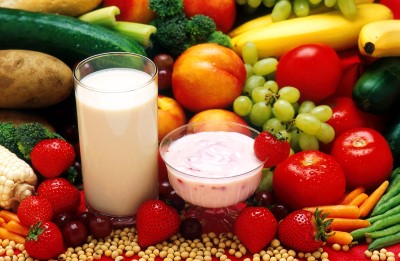
With more families using continuous glucose monitoring, many people are asking what they can do to reduce the rise in glucose levels after meals.
It is normal for glucose levels to rise somewhat after a meal. However, if glucose levels consistently rise to more than 10mmol/l, Children’s Diabetes Centre dietitian Barbara Keating recommends trying the following:
Choose carbohydrate foods with a lower glycaemic index: Glycaemic index (GI) is a measure of how quickly foods that contain carbohydrate are digested or broken down into sugars and absorbed into the blood. Low GI foods have a lower, slower effect on blood glucose levels and high GI foods have a faster and higher effect on blood glucose levels. Swapping foods that have a high GI such as white bread or rice bubbles for foods with a low GI such as porridge or a banana smoothie will help to reduce the glucose spikes after meals.
Eat carbohydrate foods combined with other foods: The carbohydrate from food will be digested and absorbed more slowly when it is eaten in a meal with other foods. Many foods, including vegetables, legumes, nuts, milk, olive oil and vinegar have been shown to reduce the rise in glucose levels after a meal.
Change the timing of the insulin delivery: If there are some meals where you consistently see a sharp rise in glucose levels, try giving the insulin 15 to 20 minutes before you start eating. This will allow the peak in insulin action to occur at the same time as the glucose peak and lead to better control of the glucose level.
Increase physical activity: Mild to moderate physical activity can help to reduce the rise in glucose level after food. Encourage your children to play outside after afternoon tea or go for a walk around the block with the family after dinner.
Consider the impact of fat and protein: Meals that contain a lot of protein and fat, particularly saturated fat, can result in a prolonged high glucose level. Many people find this occurs after they eat meals such as lasagne, take-away pizza or fish and chips.
The dietitians in the clinic can give you more information about changes you can make to the foods you eat to reduce the peak in glucose after meals and provide you with guidelines for insulin for meals high in fat and protein.
